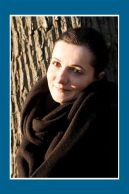- GU Home
- Faculties
- Faculty 09
- LOEWE Minority Studies : Language and Identity
- Subprojects
- Subproject C.1.1
Dynamics of Language and Identity among Arabs and Arameans in Germany

Prof. Dr. Armina Omerika
Institute for the Study of Islamic Culture and Religion
Goethe-University Frankfurt
Senckenberganlage 31,
60325 Frankfurt am Main
Office: Juridicum, Room 214
Tel.: +49 (0)69/798-33745
Fax: +49 (0)69/798-32753
E-mail: omerika@em.uni-frankfurt.de

Prof. Dr. Ömer Özsoy
Institute for the Study of Islamic Culture and Religion
Goethe-University Frankfurt
Senckenberganlage 31,
60325 Frankfurt am Main
Office: Juridicum, Room 208
Tel.: +49 (0)69/798-32751
Fax: +49 (0)69/798-32753
E-mail: oezsoy@em.uni-frankfurt.de
Institute for the Study of Islamic Culture and Religion
Goethe-University Frankfurt
Senckenberganlage 31,
60325 Frankfurt am Main
Office: Juridicum, Room 208
Tel.: +49 (0)69/798-32751
Fax: +49 (0)69/798-32753
E-mail: oezsoy@em.uni-frankfurt.de

Dr. Daniel Birnstiel
Institute for the Study of Islamic Culture and Religion
Goethe-University Frankfurt
Senckenberganlage 31,
60325 Frankfurt am Main
Office: Juridicum, Room 219
Tel.: +49 (0)69/798-33743
Fax: +49 (0)69/798-32753
E-mail: birnstiel@em.uni-frankfurt.de
Description
Ethnic, cultural, religious and linguistic factors combine in forming identities in the Middle East. Here, linguistic variation presents itself in the form of coexisting “communal dialects”. These reflect rather variegated aspects of identity and express inter alia the contrasting identity markers of ethnicity, nationality, religion, sedentariness, socio-economic status, and urbanity.
Against this backdrop, the actual meaning of notions like “Arab/Arabic”, “Aramean”, or “(As)Syrian” is difficult to grasp, especially regarding individuals and their identity. What is meant by these terms in each individual case is conditioned not only by individuals and their biographies, but also by their geographical place of origin, their nationality and citizenship, as well as additional factors involved in the formation of an identity, such as gender, language and dialect, religion or the socio-cultural background. Moreover, such “identities” are not static, but rather dynamic and influenced by further factors. These include the (supposed) identity of interlocutors, the current state of political affairs, and similar issues. In addition to a synchronous level of dynamics, there is also a diachronic level. These dynamics are fueled by the contexts of diaspora and migration and undergo further changes.
The project “Dynamics of Language and Identity among Arabs and Arameans in Germany” examines the factors and dynamics impacting the formation of identities among “Arameans” and “Arabs” living in Germany. It focusses not only on the basic forms of self-perception and the perception of others, but also situation-related changes that may influence the sense of belonging to and the self-localization within the respective group. The project seeks to identify and to describe the different ethnic and linguistic factors, but also historical, religious, and socio-cultural factors that have an impact are to analyzed with their constellations and effects.
By apprehending and hierarchizing the different factors and dynamics involved in the formation of “Arab” and “Aramean” identities in the German context the project will offer a contribution to the sociopolitical discourses on migration and identity.
Against this backdrop, the actual meaning of notions like “Arab/Arabic”, “Aramean”, or “(As)Syrian” is difficult to grasp, especially regarding individuals and their identity. What is meant by these terms in each individual case is conditioned not only by individuals and their biographies, but also by their geographical place of origin, their nationality and citizenship, as well as additional factors involved in the formation of an identity, such as gender, language and dialect, religion or the socio-cultural background. Moreover, such “identities” are not static, but rather dynamic and influenced by further factors. These include the (supposed) identity of interlocutors, the current state of political affairs, and similar issues. In addition to a synchronous level of dynamics, there is also a diachronic level. These dynamics are fueled by the contexts of diaspora and migration and undergo further changes.
The project “Dynamics of Language and Identity among Arabs and Arameans in Germany” examines the factors and dynamics impacting the formation of identities among “Arameans” and “Arabs” living in Germany. It focusses not only on the basic forms of self-perception and the perception of others, but also situation-related changes that may influence the sense of belonging to and the self-localization within the respective group. The project seeks to identify and to describe the different ethnic and linguistic factors, but also historical, religious, and socio-cultural factors that have an impact are to analyzed with their constellations and effects.
By apprehending and hierarchizing the different factors and dynamics involved in the formation of “Arab” and “Aramean” identities in the German context the project will offer a contribution to the sociopolitical discourses on migration and identity.
Publikationen und Vorträge
- “Classical Arabic”. In: John Huehnergard and Na’ama Pat-El (Eds.), The Semitic Languages (2. Ausgabe). Routledge Language Family Series. New York: Routledge 2019, 367-402.
- “ʾAʿribū l-qurʾān! – Reading the rasm according to relevant ḥadīṯ materials”. Paper presented at the conference “Reading the Rasm II”, Berlin-Brandenburg Academy of Sciences, December 3-5 2019.
- “Divine Speech in Saadia Gaon’s Arabic Bible Translation – A Bridge Between Two Cultures?”. Paper presented at the symposium “Divine Logos and Transmission: Translating and Interpreting Foreign Revelations”, Frankfurt University, July 1-3 2019.
- Re-engaging Comparative Arabic and Semitic Studies (Abhandlungen für die Kunde des Morgenlandes, 115). Edited by Daniel Birnstiel and Na’ama Pat-El. Wiesbaden: Harrassowitz, 2018.
- “Neither Clear nor Clarifying – Yet Clearly Arabic”. In: Daniel Birnstiel and Na’ama Pat-El (Eds.), Re-engaging Comparative Semitic and Arabic Studies. Wiesbaden: Harrassowitz 2018, 45-104.
- “הֶחָכָם, but הַחָכְמָה: Some Notes on the Vocalisation of the Definite Article in Tiberian Hebrew”. In: Nadia Vidro et al. (Hrsg.), Studies in Semitic Linguistics and Manuscripts: A Liber Discipulorum in Honour of Professor Geoffrey Khan. Studia Semitica Upsaliensia. Uppsala: Acta Universitatis Upsaliensis 2018, 111-131.
- “The syllable structure of the Quranic Consonantal Text – some thoughts”. Paper presented at the conference “Reading the Rasm – Quranic Text, Reading Traditions and The ʿArabiyya”, Leiden University, December 7-8 2018.
- “Losst it is, my precious, lost, lost!”. Paper presented at the conference „Vergessen, verschwiegen, verdrängt: Nicht repräsentierte Stimmen, Konzepte und Texte des Islams“,Frankfurt University, May 7-9 2018.
- “Vowel lengthening and syllable structure in Qurʾanic reading traditions”. . Paper presented at the conference “Semitic vocalization and reading traditions”, Cambridge University, May 4 2018.
- “Information structure, topic and focus in Kurdistan Arabic – some remarks”. Paper presented at the conference “Contact linguistics in cross-border Kurdistan”, Frankfurt University, December 2-3 2017.
- “Problems and Challenges of Verb Stem Derivation in Qur’anic Arabic”. Paper presented at the 45th North Atlantic Conference for Afro-Asiatic Linguistics, Leiden University, June 9-11- 2017.
- Studying at Goethe University
- International applicants
- Faculties
- Overview of study programmes
- Programme for refugees
- GRADE
- Goethe Business School (continuing education)
- Research at Goethe University
- Scientific news
- Goethe Welcome Center (for international researchers)
- Collaborative research projects
- Individual research
- Visiting fellowships
- Endowed chairs
- About the University
- News-in-brief
- University administration
- Campus locations
- Campus life
- University archives (German)
- Rhine-Main-Universities






